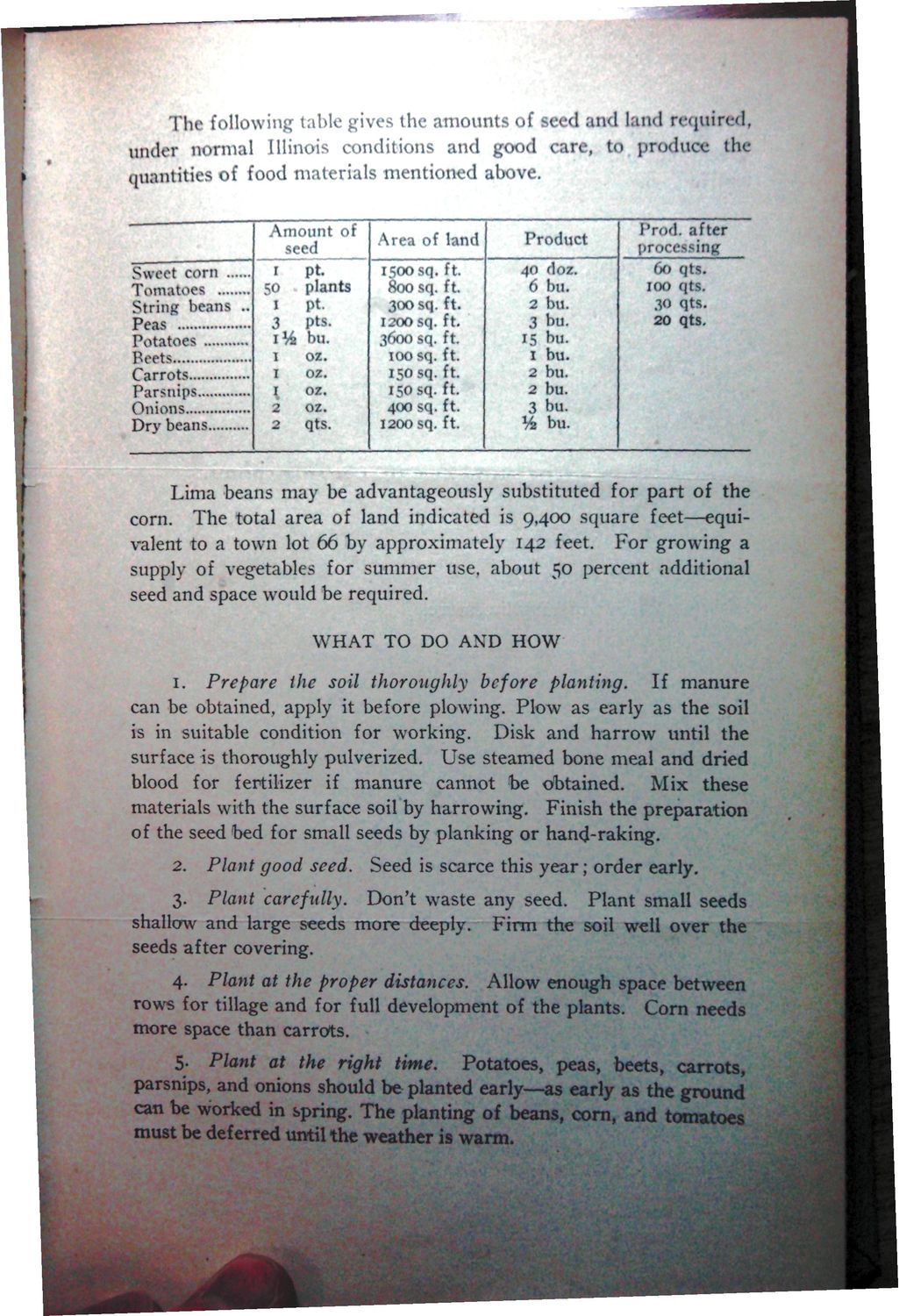Caption: War Publications - WWI Compilation 1923 - Article 4
This is a reduced-resolution page image for fast online browsing.

EXTRACTED TEXT FROM PAGE:
The following table gives the amounts of seed and land required, under normal Illinois conditions and good care, to produce the quantities of food materials mentioned above. Amount of seed I Pt Sweet corn 50 . plants Tomatoes pt. String beans .. I Peas 3 pts. bu. Potatoes oz. I I »CClS«»••••••••••• i oz. Carrots Parsnips I oz. oz. 2 Onions qts. 2 Dry beans Area of land 1500 sq. ft. 800 sq. ft. 300 sq. ft. 1200 sq. ft. 3600 sq. ft. 100 sq. ft. 150 sq. ft. 150 sq. ft. 400 sq. ft. 1200 sq. ft. Product 40 doz, 6 bu. 2 bu. 3 bu. IS bu. 1 bu. bu. bu. 3 bu. bu. Prod, after proccs-intf 60 qts. 100 qts. .30 qtS. 20 qts. Lima beans may be advantageously substituted for part of the corn. The total area of land indicated is 9,400 square feet—equivalent to a town lot 66 by approximately 142 feet. For growing a supply of vegetables for summer use, about 50 percent additional seed and space would be required. WHAT TO DO AND HOW 1. Prepare the soil thoroughly before planting. If manure can be obtained, apply it before plowing. Plow as early as the soil is in suitable condition for working. Disk and harrow until the surface is thoroughly pulverized. Use steamed bone meal and dried blood for fertilizer if manure cannot be obtained. Mix these materials with the surface soil by harrowing. Finish the preparation of the seed bed for small seeds by planking or hand-raking. 2. Plant good seed. Seed is scarce this year; order early. _ * Don't waste any seed. Plant small seeds 3. Plant careft more deeply. Firm soil well over the shallow and large s€ seeds after covering. 4. Plant at the proper distances. enou rows needs more 5. Plant at the right time. peas, beets, carrots, be is early as the ground be worked in spring. The planting of beans, corn, and tomatoes t be deferred until the weather is warm.
|